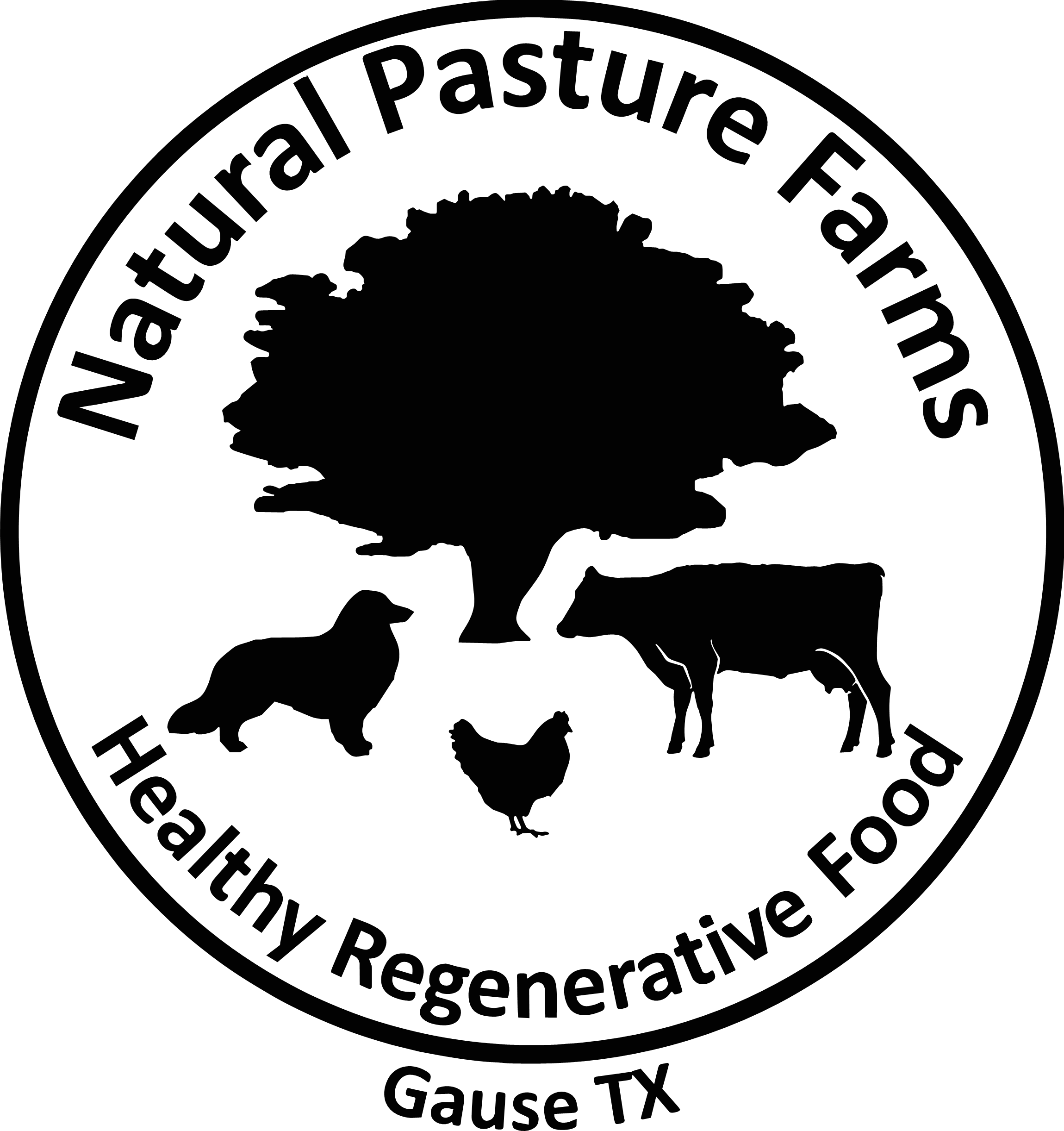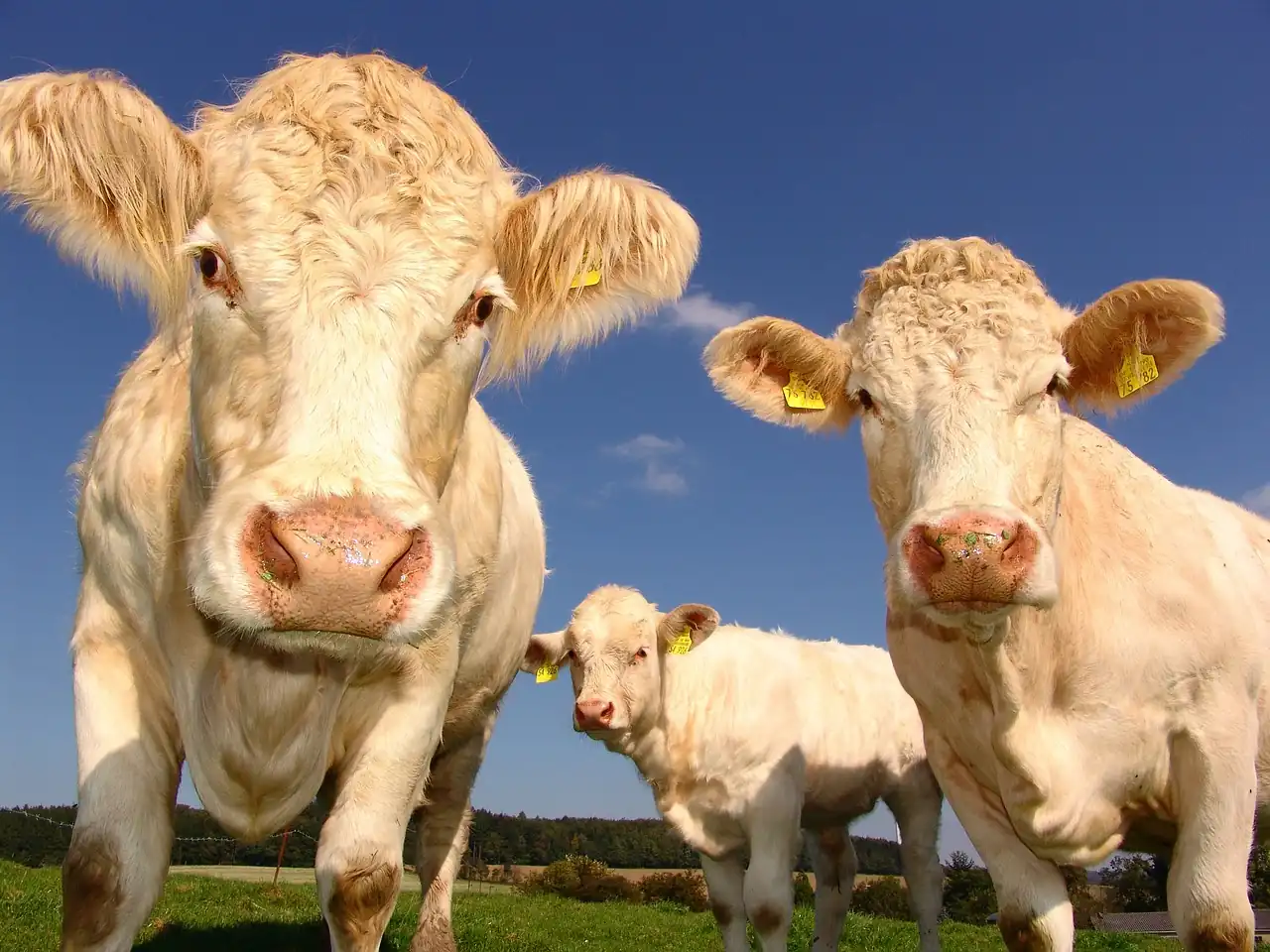Why farmers and consumers should choose regenerative agriculture.
Regenerative agriculture is based on a set of base principles which aim to improve and regenerate the health of the soil, the ecosystem, and the community. It offers a holistic approach to farming which focuses on ecosystem health together with economic viability, all while promoting the health of the farmer, their family and their community.
Here at Natural Pasture Farms we are using regenerative farming methods to heal or land, improve our health and promote our community.
In this article we will:
- Outline the benefits of regenerative agriculture
- Explain the regenerative principles
- Provide examples of regenerative practices
- Show how our farm is implementing regenerative agriculture
- Talk about the future of regenerative Agriculture
II. Key Benefits Of Regenerative Agriculture
Regenerative agriculture is the process of growing food in a way which restores soils, promotes diversity, and focuses on animal welfare all while keeping in balance the social, economic and environmental impacts of producing food. Here are some key benefits of regenerative agriculture.
Environmental Benefits
Regenerative agriculture can help to improve soil health, increase biodiversity, reduce erosion, sequester carbon, and improve water quality. By using practices such as cover cropping, crop rotation, and reduced tillage, farmers can promote healthy soil and ecosystems, which in turn can support the overall health of the planet.
Economic Benefits
Regenerative agriculture can lead to increased profitability for farmers by reducing input costs and increasing yields. Additionally, regenerative practices can help to build resilience to climate change and other environmental stressors, which can help to ensure the long-term viability of the planet.

Social Benefits
Regenerative agriculture can also have positive impacts on local communities. For example, it can create jobs, support local food systems, and improve access to fresh, healthy food. By prioritizing the health of the soil and the community, regenerative agriculture can help to create a more sustainable and equitable food system.
Health Benefits
Regenerative agriculture can also have positive impacts on human health. By using practices that prioritize soil health, farmers can produce nutrient-dense crops that are more resistant to pests and disease. Additionally, regenerative agriculture can help to reduce the use of harmful chemicals, which can have negative impacts on human health.

III. Regenerative Farming Principles
There are many common regenerative farming practices which can be implemented to improve the health of the soil, promote species diversity all while improving the health and the lives of the farmer and their community.
Cover Cropping
This involves planting a cover crop such as legumes, grasses or brassicas in between main crop seasons. The cover crop helps to protect the soil from erosion, retain moisture, and add organic matter to the soil.
The root systems of cover crops also improve soil structure and increase the amount of nitrogen available to the next crop. This practice can lead to improved soil health, reduced soil erosion, and improved crop yields.
Cover cropping, via spreading or no-till drilling seed over a pasture, can also be done to extend the grazing season for livestock producers. This can allow the producer to reduce the amount of hay they must feed during the winter.
Reduced Tillage
Reducing the amount of tillage or mechanical disturbance of the soil can help to protect the soil structure and the beneficial microorganisms that live in it. This practice can help to reduce soil erosion, retain soil moisture, and increase soil organic matter. Additionally, reduced tillage can help to reduce greenhouse gas emissions by sequestering carbon in the soil.
No-till practices are ideal and most regenerative farmers do not, or are working towards this goal. for livestock producers no-till should be the standard as they are not producing row crops.
Crop Rotation
This involves growing different crops in a sequence over time in the same field. Crop rotation can help to improve soil health by reducing the build-up of pests and diseases that can occur when the same crop is grown in the same field year after year. Additionally, crop rotation can help to increase soil organic matter and reduce the need for synthetic fertilizers, which can lead to improved soil health and reduced input costs.
Livestock Integration
This involves integrating livestock into cropping systems, for example through rotational grazing. Livestock can help to improve soil health by providing nutrients to the soil through manure and urine, as well as by trampling and grazing the soil, which can help to improve soil structure. Additionally, livestock integration can help to reduce the need for synthetic fertilizers and can provide a source of income for farmers.

Rotational Grazing
As mentioned above, animals should be on the land and constantly moving across it. Rotational grazing is meant to mimic the migratory patterns of herd animals like bison. This movement moves them away from their manure, lets the land rest and promotes the grasses to develop deep roots which sequesters carbon and feeds the soil.
Limiting Chemical Usage
The implementation of these methods means the farmer is no longer dependent of the use of chemicals to fight nature. Actually, the use of chemicals on a regenerative farm will generally only yield negative results, as the natural cycles which the farmer is depending on will be disrupted.
IV. Our Regenerative Practices
Here at Natural Pasture Farms we believe that modern agriculture is causing many of our health, social and environmental issues, so we started using regenerative farming practices from day one. Our goal is to heal ourselves and the planet through what we eat and how it’s grown.
Rotational Grazing
We have been a regenerative farm since the 1st day our cows came onto the property. We use rotational grazing with all of our animals on the farm. Moving them around, away from their manure and onto fresh ground. This all but eliminates sickness, which means we do not use antibiotics. It moves them away from their parasites and allows the land to rest. We are mimicking nature by trying to replicate large herds moving across the landscape.
No Chemicals
We do not use chemicals on our farm. No herbicides to kill weeds are needed. No pesticides to control the bug populations. No Fly sprays are applied to any of our animals. No dewormers are needed to control internal parasites. When you work with nature it doesn’t need to fight back.
Organic Feed
To take the No Chemicals idea further, we do not bring any feeds or minerals onto the farm which are not Organic. We get our feeds and minerals from local companies whenever possible. Our feeds come from Coyote Creek Feed Mill and our Minerals come from Fertrells.
Limit Fossil Fuel Inputs
We try and limit the use of tractors or other gas powered vehicles on our farm. We walk, a lot. We use them strategically to speed up certain tasks or to do things like cutting hay, but we do not use them as transportation. This drastically reduces our carbon footprint and helps to preserve our pastures by stopping compaction and erosion.

Animal Impact
We use animal impact to promote soil formation while we limit their ability to cause compaction and erosion. We control their density depending on what the ground is like. For instance, if we want to control some weeds we can use a high stocking density for a short period to pound the weeds. Or, if it is wet we can spread the animals out and move them quicky to lessen their impact on the soft soil.
Species Diversity
We promote species diversity, both through the types of animals we raise on the farm and through the way that we manage the land. We raise many types of animals which all have a purpose on the farm. The cows are the main grazers, promoting the pastures and building soil through their manure.
We use sheep as the cleanup crew, they help to eat what the cows don’t eat so we do not have to mow the weeds. The chickens help to control the bug population and provide a bit of soil disturbance and fertilization. They also help to spread the manure left by the other animals. And the pigs help to root and open up the wooded areas, letting in light so we can grow more grass for the other animals.
V. The Future Of Regenerative Agriculture
Growing Popularity
Farmers are adopting regenerative practices in response to the long-term negative impacts which conventional farming practices have had on their land and their profitability. Consumers are starting to demand food that is produced in a more sustainable and ethical way, and are willing to pay more for food that meets these standards.
Policymakers are also starting to recognize the potential of regenerative agriculture to address a wide range of issues, from soil health and water quality to climate change and rural development. As more people become aware of the benefits of regenerative agriculture, there is a growing movement to promote this approach to farming.

Barriers To Adoption
While regenerative agriculture is gaining in popularity, there are still significant barriers to it’s adoption on a larger scale. Many policies and regulations favor conventional farming practices, making it difficult for farmers to adopt regenerative practices or receive support for doing so.
Another challenge is the lack of research and education about regenerative agriculture. Many farmers are not familiar with regenerative practices or are hesitant to adopt them due to a lack of information and templates to follow. Additionally, many consumers are not aware of the benefits of regenerative agriculture which is limiting the growth of the market for regenerative products.
VI. Conclusion
Regenerative agriculture offers a holistic approach to farming as it simultaneously focuses on environmental sustainability, personal and social health and economic growth. This agricultural movement is the way forward, but we need people to become aware of the issues with our current food system and that a solution exists. You can support the movement by spreading the word and by searching out and supporting local regenerative farms in your area. Here is an article on how you can find local farms near you.



